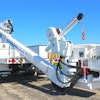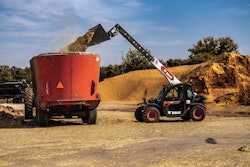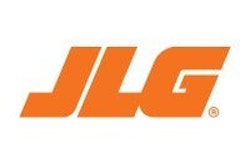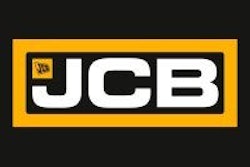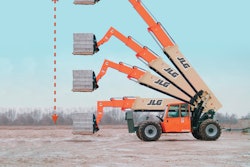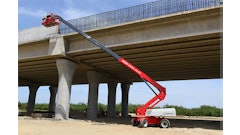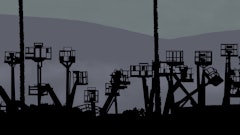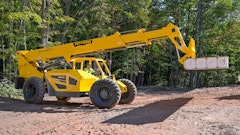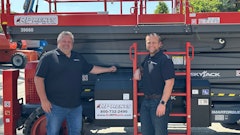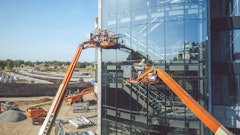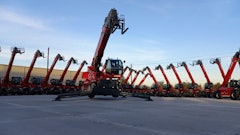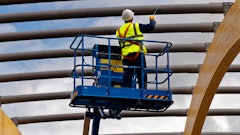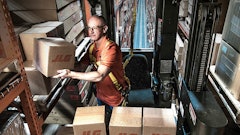The performance of a telescopic handler may not be as easy to measure as it is for some types of construction equipment. With a backhoe-loader or excavator, you can more easily quantify how quickly you can dig a trench or how much dirt you can move per gallon of fuel. Yet, achieving maximum performance is critically important with any machine you have in your fleet.
Like most equipment, obtaining optimum telehandler performance starts with selecting the right machine - including available options - then learning to operate the unit most efficiently.
Get the right start
Telehandlers generally fall into four categories. Compacts are suitable for getting into small spaces, while ground-engaging models have high bucket breakout forces for digging capability. As their name implies, tool carriers are attachment-capable, and lift-and-place machines are designed for moving materials/workers to heights.
To ensure optimal performance, evaluate what you plan to do with the machine before making a purchase, rental or lease. "You don't want to use a lift-and-place machine for digging," says Jim Blower, mid-range product marketing manager, JCB. "It has a chain system that isn't designed to handle the stresses of digging. You can do some light material rehandling, but don't dig with it."
You will also want to select options that can make the tasks easier, such as auxiliary hydraulics.
"Auxiliary hydraulics can enhance performance, because it gives you the ability to use other features such as rotating, side-shift or swing carriages," says John Rau, product training specialist, Gehl. "In a tight alley, alongside a building, you can lift a load of plywood up to the window sideways with a swing carriage. Auxiliary hydraulics also allow you to use attachments such as augers and winches. I recommend it on all machines because it gives you the ability to use a lot more attachments, and every attachment changes the performance of the machine."
Another option worth considering is transmission declutch or disconnect. When engaged, it automatically puts the machine in neutral and directs all the power to the hydraulics to improve boom performance.
To further enhance boom performance, JLG offers AccuPlace models, which allow the operator to move the boom in straight vertical and horizontal planes to assist operators in placing loads. Ride control is also available to help stabilize the load. "It is particularly useful when traversing rough terrain," says Brian Boeckman, product parent telehandlers, JLG.
Some manufacturers offer multiple joysticks styles to ease operation. For example, some Gehl telehandlers feature single joysticks, while others have a dual stick system. "Having different options gives customers the ability to choose," says Rau. "It doesn't necessarily matter which style you choose. You just need to know where your comfort level is, because you need to be comfortable with what you're operating so you don't make mistakes."
JLG also offers a lift/loader switch on its compact models. It allows the operator to change the operation of the boom by choosing either the lift or telescope function on the X-axis of the joystick. "This is particularly helpful when you have multiple operators with different control preferences using the same machine," says Boeckman.
Operator comfort goes a long way toward maximizing performance, as well. Several manufacturers, including JCB, have made the move from mechanical to servo controls.
"Servo controls reduce the effort and force needed to move the lever, as well as the distance it needs to be moved," says Blower. "That results in less fatigue on the operator, because he isn't moving a heavy control a long distance, and it allows for more precise control of the functions. A comfortable operator is a happy operator, and a happy operator will likely work longer, more productively."
Many manufacturers also offer enclosed cabs with heat and/or air conditioning, as well as air-ride seats, improved visibility, etc.
Operating tips
Most telehandlers are available with functions such as inching controls and multiple steering and speed modes. Knowing how and when to use these functions can maximize performance.
The inching function allows the operator to slowly move the machine while the engine speed is kept on high for other machine functions. "It is often used to slightly adjust the telehandler's position while using the boom to lift the load into place," says Boeckman.
Multiple speed selections allow the operator to select the speed that is most appropriate for the ground conditions.
"I recommend that operators use all the speeds on a jobsite," says Rau. "Start in the lower speeds for a quicker take-off. If you start in fourth, it will take longer to engage and it draws down the machine's performance." Save higher speeds for traveling around the jobsite.
Many machines are available with three steering modes: crab, two-wheel and four-wheel steer. To get the most from your machine, operate each mode for the optimal task it's designed to perform.
Two-wheel steer allows the machine to steer like a car. "It's best used when traveling longer distances at faster speeds," says Boeckman.
Four-wheel steer is most commonly used on the jobsite. "It offers the most maneuverability because it offers tight turning with all four wheels of steering," says Blower.
Crab steering allows the telehandler to be maneuvered in tight quarters by turning the rear wheels in the same direction as the front. "It's great if you need to get into a tight area, such as working between two homes," says Rau. "If you're not close enough, or if you're too close, you can creep sideways on an angle. Crab steer is probably the least used steering mode, but it's extremely valuable if you have tight areas."
JLG also offers a rear-pivot steer line of telehandlers, which allow the rear wheels to turn 90°. "Rear-pivot steer telehandlers keep the load within the turning circle of the machine for improved maneuverability," says Boeckman.
Stick to the limits
Of course, beyond the features and functions on your machine, you need to know the machine's capabilities and the type and weight of the material you're lifting.
"Know if your load is going to be unbalanced," says Blower. "The ideal scenario is lifting an object such as a box. The center of gravity is in the center and you can pick it up easily. But when you start moving material such a pipe, where the center of gravity is always moving, it can get tricky. Become familiar with your machine and what you're lifting for optimum performance and safety."

